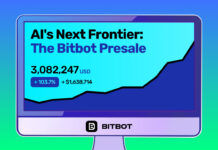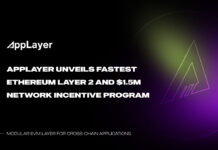CEX.IO has recently launched a few new trading options. They now support both Dash, and Zcash – two of the best performing digital assets among cryptocurrencies. These two next generation digital currencies each have their own sets of advantages and differences from the most well-known in the space – Bitcoin. To get the users up to speed, here is a short guide to the newest CEX.IO additions, including their history, their uses, and a bit about their technicalities.
What is Dash?
If Bitcoin is to be considered virtual gold, then Dash seeks to be its digitised paper-money equivalent. The word Dash, of course, being derived from “digital cash”. Dash allows instantaneous, anonymous payments in both real-world locations and on the web using a decentralised, open-source platform.
Like Bitcoin, Dash incentivises those performing duties on its peer-to-peer network. However, unlike Bitcoin, the roles are split between two distinct groups. On the BTC blockchain, all transaction and security duties are undertaken by the miners alone. Dash breaks this model and instead relies on both master-nodes, and miners. The network incentivises each with a share of the block reward. Securing the blockchain is the responsibility of the miners. These receive 45% of every block reward. Meanwhile, the other 45% is distributed to master-nodes who check transactions that are made between users. Being as the Dash network is made up of over 4,000 of these master-nodes, it is one of the planet’s largest decentralised ledgers. This high number of nodes translates to increased speed and security for all network participants.
To become a master-node, users need at least 1,000 DASH as collateral. This barrier to entry prevents various attacks occurring on the network. Master-nodes also handle some of Dash’s next-generation blockchain features:
PrivateSend – essentially a service which mixes coins. This is performed at the protocol level. This feature adds additional anonymity to transactions by merging the inputs from several users into one transaction with many different outputs. This means that it’s impossible to directly trace where the transaction came from originally.
InstantSend – this feature has been designed to speed up transactions. Using InstantSend, payments arrive in seconds rather than minutes like with Bitcoin.
The remaining 10% of each block rewards goes towards the “treasury” system. This ensures that the developers have a suitable purse from which to work. Previously, these funds have been used for staffing purposes, the funding of conferences, and to help getting Dash listed on additional exchanges.
Dash History
The Dash blockchain first went live in 2014, and it was originally called XCoin. It quickly became Darkcoin before eventually settling on “Dash” the following year. There was some controversy around the time of its inception, however. Thanks to a bug created during the fork from the Litecoin blockchain, 10% of the entire currency was accidentally mined almost instantly. Project leader Evan Duffield attributed the issue to a fault with the mining difficulty adjustment in the fork’s code.
Once the team had resolved the problem, they offered to airdrop the 1.9 million coins they’d produced, or even relaunch the coin entirely. However, the community disapproved of both measures and as such, most of these coins hit the various exchanges at low price points. There remains some voices within the crypto-community that insist that Duffield used the currency to personally enrich himself. However, many proponents of Dash claim that even if Duffield had indeed intended to give himself such a large quantity of the currency, it’s no different to what the still-anonymous Satoshi Nakamoto did with Bitcoin.
Why Dash?
Thanks to growing network congestion leading to higher fees on the Bitcoin blockchain, Dash is rapidly emerging as an alternative for online payments. Both major retailers who warmed to crypto early on and even blockchain start-ups are finding currencies like Dash more able to deliver the promises circulating around the cryptocurrency leader Bitcoin from a few years ago. So, for example, Yours Inc. owner Ryan Charles once mentioned that Bitcoin is far from being competitive with PayPal or Western Union because of ever-increasing fees. And that is particularly true.
For smaller companies like Yours Inc. and gift card providers from Ireland, Bitcart, the high transaction fees associated with BTC can crush their entire business model. That’s why many are now choosing Dash as an alternative.
What is Zcash?
Zcash is a cryptocurrency that uses Bitcoin as its base. However, it has much greater on demand privacy features. It allows users to select the level of transparency they require for every transaction, and that is the main distinguishing feature of Zcash.
Like https added encryption to communications between browsers and websites, Zcash offers extra security and anonymity by offering the user the ability to hide details relating to transactions. Using the so-called “zk-SNARK”, which stands for “Zero-Knowledge Succinct Non-Interactive Argument of Knowledge”, Zcash users can encrypt various information. This can include the sender’s and receiver’s addresses, and the amount of Zcash sent. Despite having this level of privacy, all transactions still appear on the Zcash blockchain. This provides the same secure and trustworthy ledger as Bitcoin with additional anonymity control for users.
Z-Cash history
The history of Zcash is much shorter than that of Dash and Bitcoin. The Zcash blockchain was launched on October 28, 2016. It started existence as the Zerocoin project, with the goal of bringing greater anonymity to Bitcoin transactions. The original protocol went through some improvement processes before being rebranded as ZeroCash. This became simply Zcash in 2016.
The original project was financed from seventeen sources. As you’d expect, these investors were mostly experienced members of the cryptocurrency community. Amongst the list of financiers are Vlad Zamfir of Ethereum, Bitcoin maximalist Roger Ver, and Shapeshift’s Erik Voorhees.
The stakeholders received a tenth of the total ever supply of DASH. Like Bitcoin, there will only ever be 21 million coins. The 2.1 million coins reserved for the original investors is known as the “Founders’ Reward”.
Why Zcash?
The most obvious reason that someone might choose Zcash over Bitcoin is its privacy. Without the anonymity features of Zcash, the two are practically identical. Contrary to what some critics have claimed, the list of reasons why a user would want their transactions to remain private is long, and more varied than simply to carry out illegal activity.
Zooko Wilcox has even hosted several meetings with law enforcement agencies to explain the fundamentals of the currency, and how they can be used without warranting suspicion. It’s clearly important for him to iron out any legal issues that are inherent with potentially anonymous transactions.
Dash and Zcash Are Heading Towards CEX.IO
A while back, one of the most popular exchanges, CEX.IO, announced its support for Dash and Zcash, which was a welcome surprise for the users. Now the newly introduced coins are available for trading with US Dollars, Euros, Pounds, and Bitcoins.
However, CEX.IO misses no opportunity to make their users’ experience more positive, and soon Dash and Zcash will be part of the quick buy/sell feature on the platform. Moreover, the exchange is looking into margin trading options for both Dash and Zcash in the near term if demanded by the users.

TheBitcoinNews.com – Bitcoin News source since June 2011 –
Virtual currency is not legal tender, is not backed by the government, and accounts and value balances are not subject to consumer protections. TheBitcoinNews.com holds several Cryptocurrencies, and this information does NOT constitute investment advice or an offer to invest.
Everything on this website can be seen as Advertisment and most comes from Press Releases, TheBitcoinNews.com is is not responsible for any of the content of or from external sites and feeds. Sponsored posts are always flagged as this, guest posts, guest articles and PRs are most time but NOT always flagged as this. Expert opinions and Price predictions are not supported by us and comes up from 3th part websites.
Advertise with us : Advertise
Our Social Networks: Facebook Instagram Pinterest Reddit Telegram Twitter Youtube











